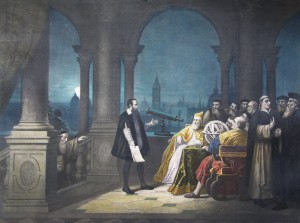I’ve been thinking a lot about gender recently. In part this has been sparked by reading Margaret Farley’s excellent book Just Love. Her work has helped me realize two things.
- Gender permeates our thinking and speaking.
- Gender is harder to define than you might think.
We are forever talking about gender, and the differences between the sexes.
Books like “Men are from Mars…” become bestsellers.
Movies are categorized into ‘chick flicks’ and guy flicks.
Language itself is frequently gender specific. In French, and in many other languages, objects are considered to be masculine or feminine, and referred to differently in each case.
Religions talk about gender a lot. Many religions have codes outlining acceptable behaviour for men and women, and for the relationships between the two. Even today, the Catholic church teaches that not only are women not permitted to be priests, they are not able to be – it is a kind of category error. In the muslim world, there are strict rules regarding the participation of men and women in communal worship.
Gender-based violence is still a huge problem in our society. Perhaps 1 in 4 women in Canada have experienced some kind of sexual assault.
And yet despite this preoccupation with gender, I’m finding that it’s harder than you might think to define what we mean by the term.
When we talk about gender, when we talk about masculine and feminine, what exactly do we mean?
Maybe we mean the behavioural traits that are associated with one gender or another. But what do we do if these vary from culture to culture?
Maybe we mean the physical characteristics that are associated with a gender. But again, what if these overlap? Men are said to be stronger athletes than women, but this is only true in the aggregate. I will never run a triathlon as fast as Chrissie Wellington, however hard I train.
Perhaps we mean the social roles that men and women are expected to fill. Nearly every society on earth divides task by gender, but interestingly they don’t always agree which tasks should be performed by which gender.
Perhaps when we’re talking about gender we’re simply talking about biology – the presence or absence of specific reproductive organs. Although interestingly enough, these only start developing after a couple of months gestation, in response to certain genetic triggers.
So perhaps gender is all to do with genetics and chromosomes. Fair enough, but even this runs into trouble when we start learning about the complex ways that humans and other animals determine gender. Humans use X and Y chromosomes, other animals use Z, W, O chromosomes, or even environmental triggers such as temperature, to determine the gender of an infant. Still other animals change gender during their lifetimes. And even in humans, there are combinations of chromosomes and genes that lead to indeterminate gender.
So we’re left with this strange state of affairs – words that we all use, that we all assume have a common, shared meaning, and yet on closer inspection may hide some very complex realities.
I mean to consider the implications of these complexities in subsequent articles.
